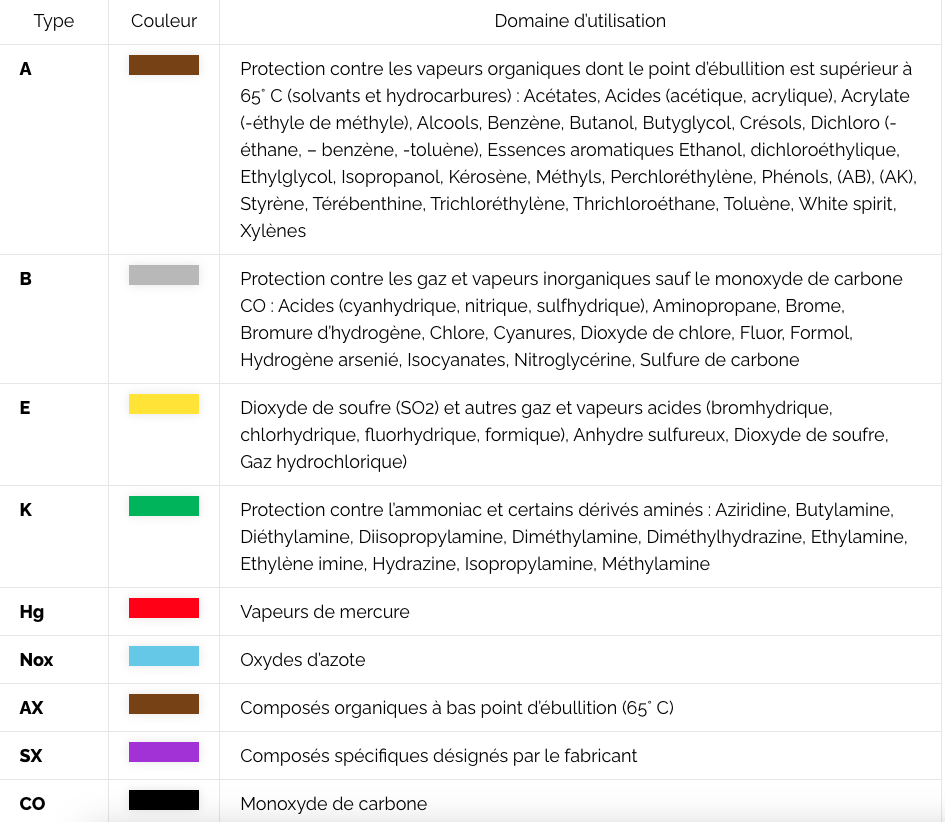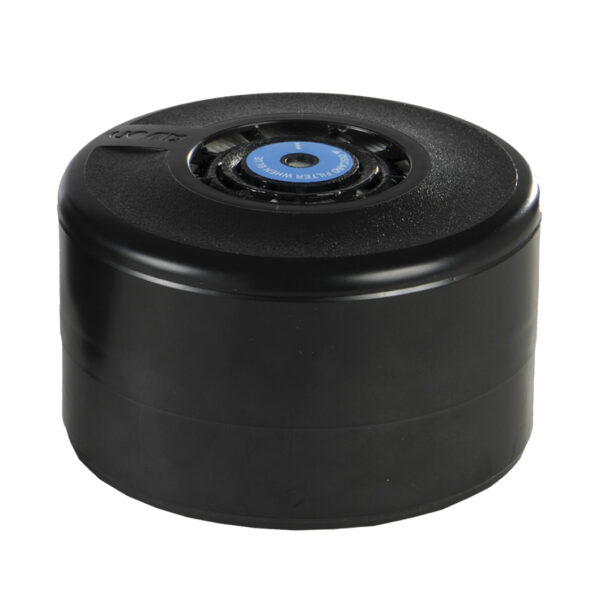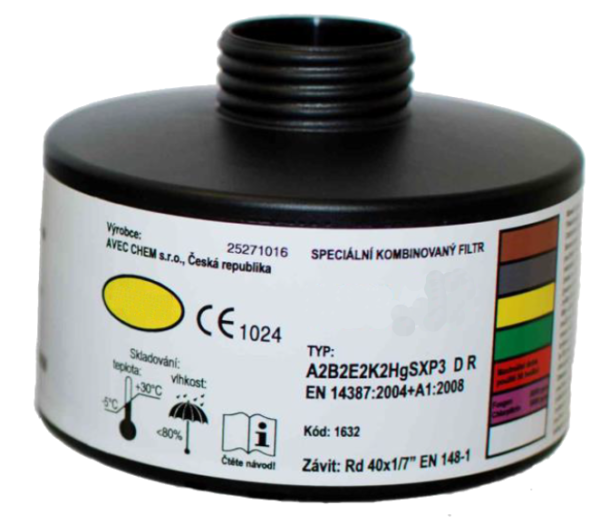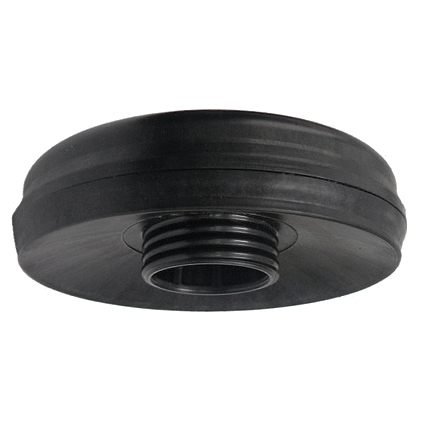What is it about?
The CBRN mask, formerly known as a military gas mask, is a PPE designed to resist chemical, biological, radiological and nuclear hazards. This respiratory protective equipment is primarily dedicated to law enforcement and the military.
A CBRN mask is a full face mask. It protects the respiratory tract (nose and mouth) and the eyes for maximum safety. The half mask does not cover the eyes and the protection is insufficient. The CBRN mask is designed to offer the best comfort to its user and the best protection during civil and military security applications.
History
The first chemical warfare masks appeared at the Battle of Ypres on April 22, 1915. The Germans released 160 tons of chlorine that enveloped French and Canadian troops in drifting clouds. This was the beginning of chemical warfare. The first respiratory protection was limited and consisted of urine-soaked wipes held over the mouth and nose. The ammonia in the urine reacted with the chlorine to produce chloramines and limited the effects of the gas. The urine was then replaced with sodium thiosulfate (a chlorine neutralizer) impregnated into cotton balls placed in front of the mouth and nose.
Then masks evolved in parallel with the evolution of military techniques. The appearance of products that attack the skin, such as mustard, obliged them to complete and integrate the mask into a suit that protects the body. The arrival of atomic weapons led researchers to find solutions to fight against radioactive dust. In addition, we must now take into account the germs dispersed during a biological attack: the spectrum of toxic agents is widening and protection must take this into account.
The CBRN mask
A CBRN mask is respiratory protection against chemical, biological products, or radioactive particles. It is worn on the face, protecting the eyes and face and covering the respiratory tract entrances, mouth and nose.
It generally consists of a mask and a filter: it is therefore a filtering respirator (FRP).
The filtering respirator consists of a tight mask and a filtering cartridge. This cartridge contains filters adapted to one or more toxic gases. The filtering respirator, therefore, protects against dust and particles and acts on different types of gases depending on the characteristics of the filters.
Toxic substances in the air can be gaseous (e.g. chlorine), liquid, or solid in aerosol form (e.g. mustard), but also biological with bacteria, viruses, toxins, or spores. Most filters are able to counter all these threats. Some filters are also able to retain radioactive dust. They are then said to offer NRBC (nuclear, radiological, biological, and chemical) protection.
The filters
Action on aerosols
This action is measured by the capacity of the filters to stop particles of 0,3 µm
These filters, also called particulate filters, protect against dust, smoke, micro-organisms, or viruses.
There are 3 types of filters depending on their ability to stop particles
| P1 | Stops at least 80% of this aerosol (i.e. less than 20% penetration). Useful to protect against solid particles without specific toxicity (calcium carbonate…) |
| P2 | Stop at least 94% of this aerosol (i.e. penetration of less than 6%). To protect against dangerous or irritating aerosols, solid and/or liquid (Silica, sodium carbonate…) |
| P3 | Stop at least 99.95% of this aerosol (i.e. penetration less than 0.05%). To protect against toxic aerosols, solid and/or liquid (Beryllium, nickel, uranium…) |
Action on gases
The filters are able to fix different types of gases. The marking of the category is done by a colored band on which the corresponding code is indicated.


The filters are then separated into three categories according to their autonomy:
| Catégorie 1 | Low capacity (wafer): concentration should not exceed 0.1% (1000 parts per million) |
| Catégorie 2 | Average capacity (cartridge): maximum concentration is 0.5% (5000 parts per million) |
| Catégorie 3 | Large capacity (Canister): maximum concentration is 1% (10000 parts per million) |
Combined particulate and gas filters
CBRN filters have an action on both particles (P) and gases.
Example 1: The properties of a filter will be read as the combination of all these codes. For example, an AE1P2 filter is effective against organic gases and vapors (A), sulfur dioxide, and acid vapors (E), has a low capacity (1), and stops at least 80% of P2 aerosols.)
Example 2: The reference CBRN cartridge is very versatile. ABEK2 P3 NBC cartridge – broad spectrum. It is type A2B2E2K2HgSXP3. Referring to the table above, we can see that it protects against TICs (chemical industrial toxins), chemical warfare agents, mercury and biological and nuclear particles.
Example 3: The CF50 multi-purpose cartridge protects against all known chemical warfare agents and industrial toxics and aerosols (class A1B2E1K1P3). It is equipped with a highly effective HEPA filter against aerosols and a chromium-free activated carbon bed to protect against vapors.

Example 4: The CS filter cartridge protects against :
Riot control agents, tear gas including CS, CN and OC pepper spray, dust, fog, and smoke, biological agents (bacteria, viruses, fungal spores, etc.), and radioactive particles.
The carbon and HEPA particulate filters were developed specifically for law enforcement applications
When should the cartridge be changed?
The filtration of the particles results in a clogging of the filter which opposes mechanical resistance more and more marked. It is the respiratory discomfort that requires replacement. As for the saturation of gas filters, it is generally expressed by humidity appearing at the end of the cartridge or even the smell of gases that can be felt in the mask, marking the inefficiency of the filtration.
How do these filters work?
As far as particle filtration is concerned, filters are more or less efficient depending on their structure (P1, P2, P3). The most efficient are HEPA filters.
The gases are retained by absorption or adsorption.
Absorption is a physical process in which gases or liquids are retained by the generally larger substrate.
The principle of adsorption is based on the property that solids (adsorbent) have to fix on their surface some gases (adsorbate). The interactions are molecular between the adsorbent and the adsorbate and are most often electrostatic (the adsorbent and the adsorbate have different charges) or due to Van der Walls forces: these are weak and reversible bonds (we speak then of desorption). A chemical reaction of neutralization is not necessary. As adsorbent, we can mention activated carbon, zeolites or resins.
The complete CBRN mask example OC50 [3]and OCP50 [4]
The complete structure of a CBRN mask must take into account a large number of factors such as: the forehead which must be flexible, well adapted to the face, waterproof and comfortable. Internal air deflectors that direct incoming air onto the visor eliminates any risk of fogging. This airflow management also significantly reduces heat accumulation. The visor must allow a wide field of vision and not distort vision. Corrective lenses can be worn. An offset cartridge on the right or left side of the visor ensures that vision is not impaired during delicate medical operations such as intubations. The interface with the protective clothing is also provided, as well as a hydration system. Finally, a voice amplification system allows better communication between individuals.
For better comfort of use, you can use a specially adapted blower.
Conclusion
In the event of a CBRN conflict, it is essential to wear a mask that protects the respiratory tract. Air-containing aerosols (such as mustard), particles (such as bacteria or radioactive particles), or toxic gases (such as chlorine), must be filtered before reaching the lungs.
Specialized filters are used, each with its own characteristics, some filtering particles, others toxic gases. These filters can be combined for greater versatility.

